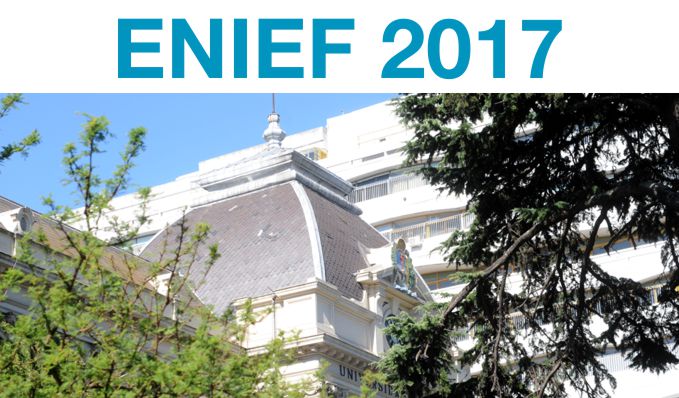Simulation of Wind turbines interaction within wind farms and with the environment
Dr. Ing. Alejandro D. Otero
Simulating the interaction among wind turbines, wind farms and the environment is a complex task due to phenomena spanning 6 orders of magnitude in spatial and temporal scales. The problem is commanded by the synoptic scale, but all the spatial scales down to the turbulent length scale are relevant too. So is the case of the scale of the terrain topography and/or the characteristic scales of the turbine aerodynamic components. Another key characteristic of wind power generation, specially when compared with other conventional sources, is its dependence with wind variability. This happens at all scales but the most remarkable ones are: the scale in the order of seconds, which is relevant for the turbine control system? and the scale that spans from minutes to a few days, which becomes important for the insertion of wind energy into the power system.
In this talk I will present the underway work at the Computational Simulation Center for Technological Applications (CSCCONICET) aiming at the study and simulation of different scales of the problem. We attempt to have a set of interchangeable models that could be combined with different accuracy and computational cost. The methodology chosen in each case will be commanded by the requirements of practical applications. The external weather conditions are provided by a Numerical Weather Prediction (NWP) model. The NWP also provides information that could be useful for estimating generation by other renewable energy sources or, even, power demand. The NWP simulates atmosphere physics in a regional domain surrounding the wind farm, and can be run both in analysis and forecast modes. Initial and boundary conditions for the NWP are provided by global forecast systems. Wind turbine wake interaction is analyzed by means of both high resolution Computational Fluid Dynamic (CFD) simulations AND reduced order wake models, which are several order of magnitude cheaper in computational terms. Both approaches use data from the NWP as initial and boundary conditions. The simulation of the interaction between individual wind turbines and wind flow also presents several alternatives, from the high definition bodyfitted CFD to a number of reduced order models with diminishing computational costs.
These reduced order models include methods based on the classical 'blade element momentum theory', and the family of actuator {disk, line and surface} methods, which couple with CFD representing the action of turbines by equivalent distributed forces.
Additionally, according to the phenomena to be studied, other models could be coupled to represent turbine components such as deformable structures, like blades and towers, and mechanical and/or electrical components. I will present results of simulations of flow inside and surrounding wind farms, as well as power generation estimation, obtained by some of the techniques mentioned above, and how they compare with actual working situations in a wind farm in the Argentinean Patagonia.
At the end, I will briefly present the CSCCONICET and its HPC infraestructure 'Tupac' a major member of Argentinean HPC national system.
















